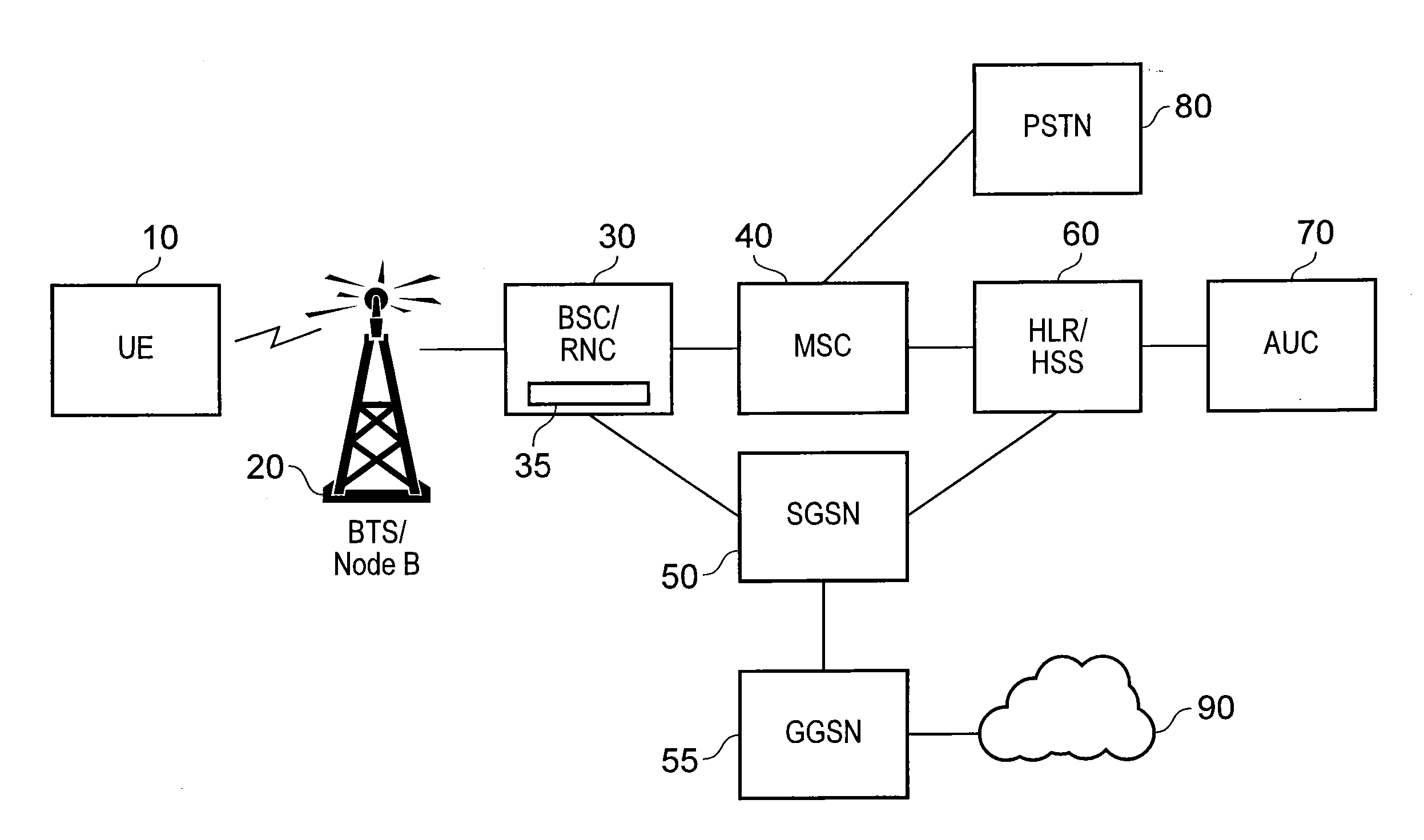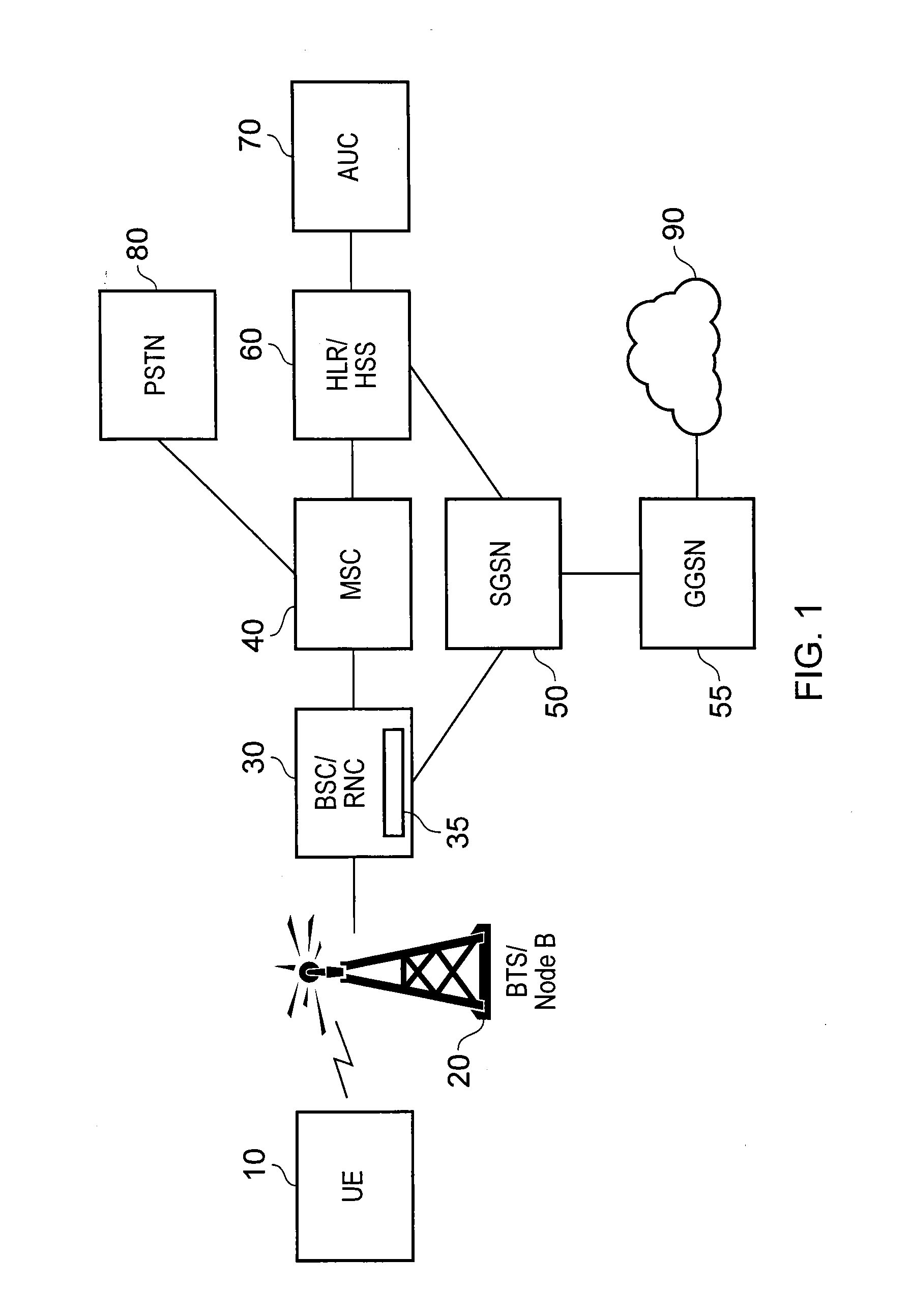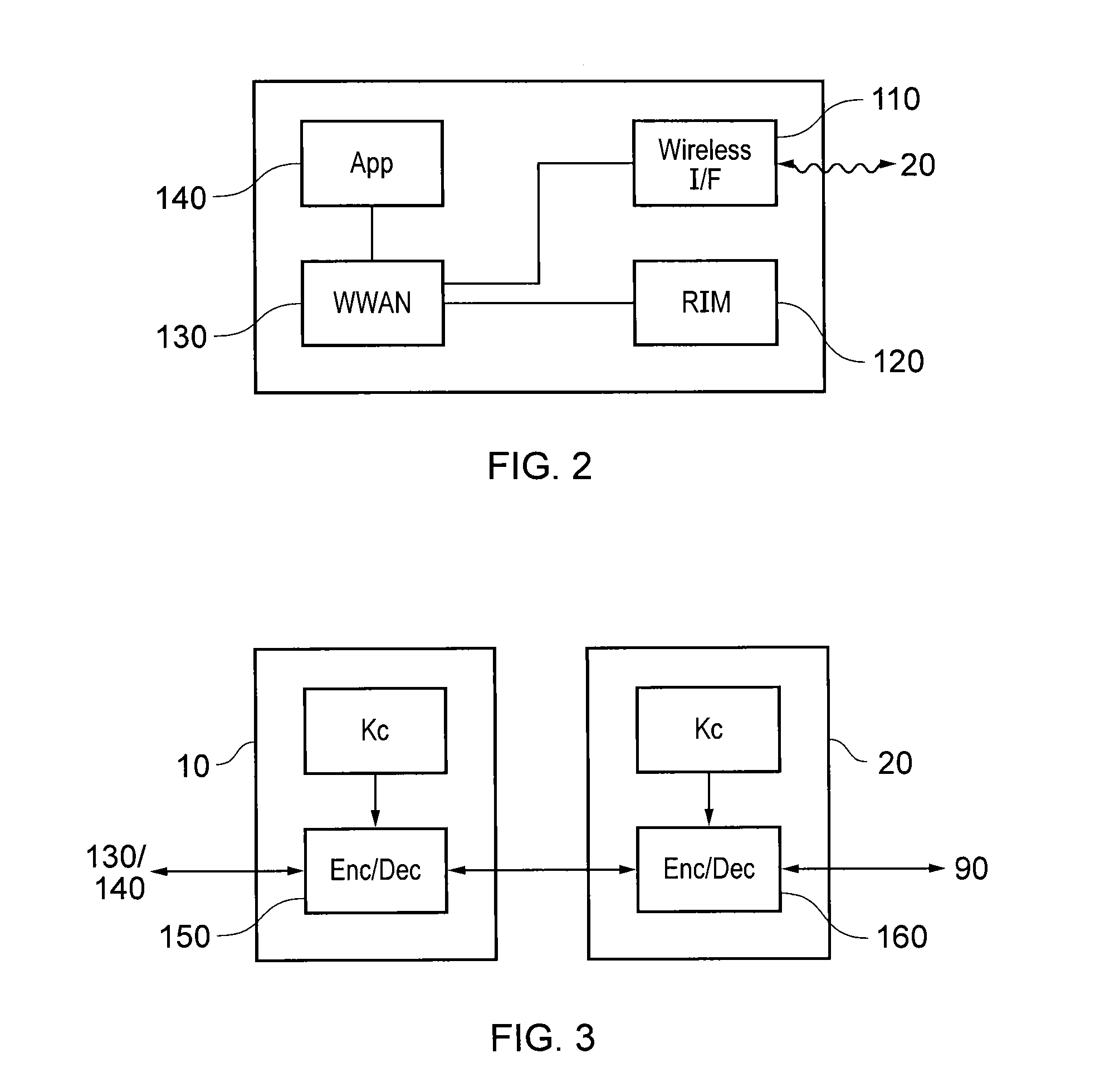Mobile communications
a mobile communication and network operator technology, applied in the field of mobile communications, can solve the problem that users cannot choose a different network operator for mobile data, and achieve the effect of improving the competition between mnos
- Summary
- Abstract
- Description
- Claims
- Application Information
AI Technical Summary
Benefits of technology
Problems solved by technology
Method used
Image
Examples
Embodiment Construction
[0038]Reference is now made to the drawings, wherein like reference numerals designate identical or corresponding parts throughout the several views.
[0039]Referring now to FIG. 1, a mobile communications network comprises a user equipment (UE) 10, a base transceiver station (BTS) 20 (the equivalent function being referred to as “NodeB” in the context of a UMTS (Universal Mobile Telecommunications System) 3G (third generation) network, but only the acronym BTS will be used in this description), a base station controller / radio network controller (BSC / RNC) 30, a mobile switching centre (MSC) 40, a serving GPRS (general packet radio service) support node (SGSN) 50, a Gateway GPRS Support Node (GGSN) 55, a home location register (HLR) 60 and an authentication centre (AUC) 70. The MSC 40 connects to a public switched telephone network (PSTN) 80. The SGSN 50 connects to the Internet 90 via the GGSN 55.
[0040]The UE includes a SIM (to be referred to here for reasons to be described below as ...
PUM
 Login to View More
Login to View More Abstract
Description
Claims
Application Information
 Login to View More
Login to View More - R&D
- Intellectual Property
- Life Sciences
- Materials
- Tech Scout
- Unparalleled Data Quality
- Higher Quality Content
- 60% Fewer Hallucinations
Browse by: Latest US Patents, China's latest patents, Technical Efficacy Thesaurus, Application Domain, Technology Topic, Popular Technical Reports.
© 2025 PatSnap. All rights reserved.Legal|Privacy policy|Modern Slavery Act Transparency Statement|Sitemap|About US| Contact US: help@patsnap.com



